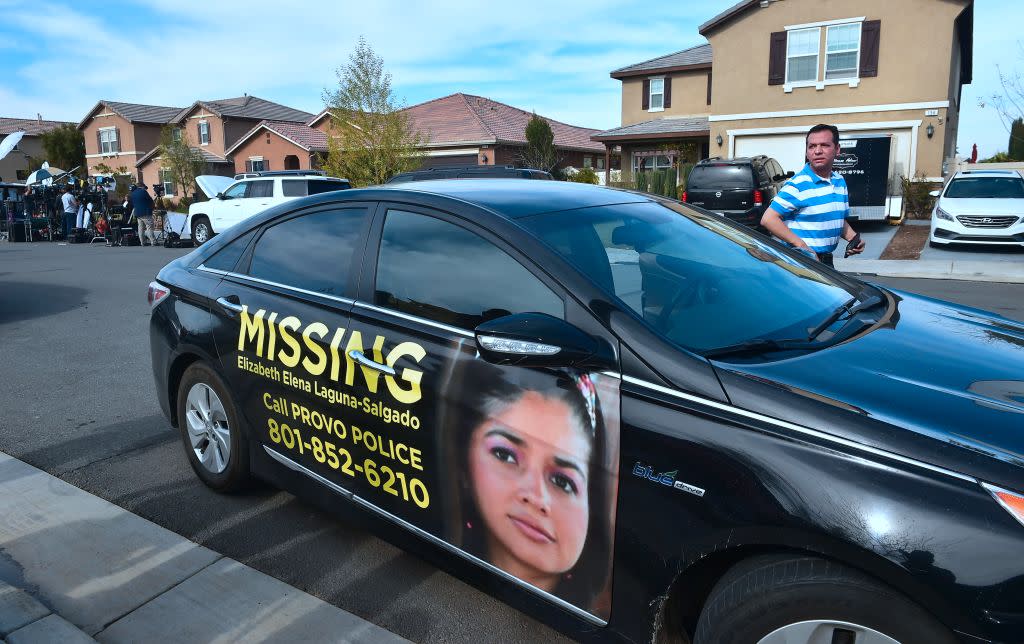Could the 13 California siblings have been saved earlier? Here's what to do if you suspect child abuse.

After years of neglecting, abusing, and torturing their 13 children, David and Louise Turpin were arrested this month by California police.
But it wasn’t a neighbor or family member who reported the Turpins to police, but rather one of the Turpin children who escaped and ran for help. That doesn’t mean neighbors didn’t have their suspicions.
There was “a pattern of thinking” neighbors shared, according to one Los Angeles Times story: “After seeing them working under floodlights late at night to put sod in the family’s yard a few months ago, neighbors said it was odd but not so unsettling that they needed to call police.”
Family members, too, struggled to connect with the family. Elizabeth Jane Flores, Louise Anne Turpin’s sister, told the Daily Mail it had been nearly two decades since she had seen her sister, and when the two spoke on the phone, Flores was not allowed to talk to the children.
According to the Department of Health and Human Services’s Administration for Children and Families, roughly 683,000 children were victims of abuse and neglect in 2015, the most recent data available and a 1.2 percent increase from 2014. Of course, the Turpin case is an extreme example of what happens when abuse and neglect go undetected for years, Sheila Boxley, the president and chief executive of the Child Abuse Prevention Center in California, where the Turpin family lived, shares with Yahoo Lifestyle.
Boxley says it’s unusual that no one would have noticed anything that warranted an alert to authorities (despite the Turpin children being outside the state school system and having a seemingly normal social media presence) — an obligation any witness should fulfill.
“It is not your job as a neighbor or mandated reporter or layperson to investigate, but it is your responsibility to pick up the phone and call Child Protective Services if you suspect something, and to call law enforcement if you think there’s an imminent threat against the child.” (Mandated reporters are those people required by law to report abuse or neglect based on their relationship to a family as an educator, coach, doctor, and so on.)
Of course, the “bystander effect” — a psychological phenomenon that refers “to situations in which individuals do not offer any means of help in an emergency when other people are present” — along with differing opinions over Child Protective Services means not everyone wants to get involved.
David DeLugas, the executive director of the National Association of Parents, a group “supporting the right of parents to raise their children as they decide so long as the children are not harmed,” advocates for “common sense” reporting to the authorities.
“If you are a parent and your child is with you, let’s say you are getting gas and you go inside to pay for the gas or buy a water bottle. Some people will call the police and complain that a child was left in the car,” DeLugas continues. “We’d like people to use common sense when you do and don’t call. And of course, everyone should err on the side of safety of the children.”
But DeLugas’s broader point touches upon the problem with fake and unwarranted calls made to authorities that might tear a family — whose situation doesn’t require intervention — apart.
In 2014, the Atlantic published a feature examining how frequently instances of reported child abuse and neglect turned out to be unnecessary. Of the 3.2 million children who CPS services checked on, 2.5 million were declared “nonvictims,” while 686,000 — 21 percent of the overall number of children — were considered abused or neglected.
“Since 2008, the number of referrals to child protective service agencies has increased by 8.3 percent, even as overall rates of actual child victimization declined by 3.3 percent during the same period,” the Atlantic wrote. “A lot of families went through a traumatic, frightening, intrusive experience before being cleared of unlawful abuse or neglect.”
Still, even those who fight to maintain parents’ “constitutional rights,” like DeLugas, say that just because Americans have a tendency to overreact doesn’t mean neighbors, family, and strangers shouldn’t be diligent in protecting children from potentially harmful situations.
To that end, every state has a website dedicated to highlighting the warning signs of emotional, physical, and sexual abuse, and neglect and how to report it. While there may be visual cues of child abuse or neglect — unexplained injuries, ill-fitting clothing, or poor hygiene — pay attention to behavioral cues like excessive withdrawal or other extreme behaviors (most of which are outlined more concretely on state sites.) And if you think your suspicions are warranted, look for reporting contact information. In California, for instance, there is the California Emergency Response Child Abuse Reporting Telephone hot lines, which anyone can call to report anonymously.
“They don’t need to be a social worker, they don’t need to investigate,” Boxley says of people who may be hesitant to call. “They just need someone trained to come check out the situation. What happens very often is that whatever is going on in a family, it might not be a case for child protective services, but it may be an access point for the family to help get the community resources and support it needs. Sometimes picking up the phone is an excellent way to prevent abuse and neglect.”
Read more from Yahoo Lifestyle:
This newly approved drug treats breast cancer like Angelina Jolie’s
How can mothers who welcome babies via surrogate breastfeed?
Follow us on Instagram, Facebook, and Twitter for nonstop inspiration delivered fresh to your feed, every day.
